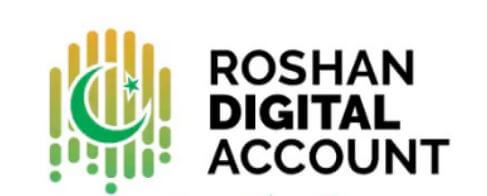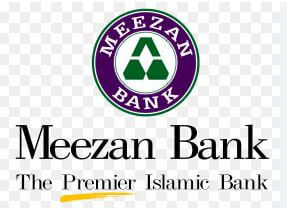International money transfer-Myth and logic
International money transfer-Myth and logic: Awareness of documentation and the steps involved is integral whether you are sending money to support family members overseas, paying for international services, or investing in foreign markets, the process of sending funds across borders is more accessible than ever.
However, to successfully complete an international money transfer, In this comprehensive guide, we will discuss how to transfer money from one country to another, including the essential documents and requirements.
Why Transfer Money Internationally?
People transfer money across borders for a variety of reasons, and these include:
1. Supporting Family:
Many individuals send money to family members living in different countries to cover expenses, including education, medical bills, and daily living costs.
2. Business Transactions:
Businesses often need to make international payments to suppliers, contractors, and other service providers.
3. Investments:
Investors may move funds internationally to purchase assets or invest in foreign markets.
4. Travel Expenses:
Tourists and travelers may need to transfer funds for travel expenses or to access money while abroad.
5. Real Estate:
Buying property in another country often requires transferring a significant amount of money.
Now, let’s delve into the steps and documentation required to make an international money transfer.
Step 1: Choose a Transfer Method
There are various methods to send money internationally. These include:
1. Bank Transfer:
Using your bank’s international wire transfer service.
2. Money Transfer Services:
Companies like Western Union and MoneyGram offer international money transfer services.
3. Online Payment Platforms:
Services like PayPal, TransferWise (now Wise), and others provide efficient means to transfer money.
4. Cryptocurrencies:
Some individuals use cryptocurrencies like Bitcoin to send funds across borders if it acceptable to other country but this is a least used way.
Your choice of method will depend on factors such as cost, speed, and convenience.
Step 2: Verify Personal Identification
Some services may also ask for additional documentation like a utility bill or bank statement to confirm your address.
For security and regulatory purposes, you’ll need to verify your identity when sending money internationally. This usually requires providing a government-issued ID, such as a passport, driver’s license, or national ID card.
Step 3: Gather Recipient’s Information
You’ll need the recipient’s details, which typically include:
1. Recipient’s Full Name:
Ensure the name matches the official ID.
2. Recipient’s Contact Information:
A valid email address or phone number.
3. Recipient’s Bank Details:
If you’re transferring to a bank account, you’ll need the bank’s name, branch, and account number.
Step 4: Documentation for Bank Transfers
If you opt for a bank transfer, you will need the following documentation:
1. Sender’s Information:
Personal identification, address, and bank account details.
2. Recipient’s Information:
The recipient’s name, address, and bank details.
3. Purpose of Transfer:
You may be asked to provide the reason for the transfer.
4. SWIFT/BIC and IBAN:
These codes are used for international bank transfers. Ensure you have the correct codes for the recipient’s bank.
Step 5: Documentation for Money Transfer Services
When using services like Western Union or MoneyGram, you typically need the following documents:
1. Sender’s Information:
Personal identification.
2. Recipient’s Information:
The recipient’s name and location.
3. Transfer Reference Number:
Provided by the service.
Step 6: Documentation for Online Payment Platforms
Online payment platforms like PayPal and Wise may require:
1. Sender’s Information:
Personal identification.
2. Recipient’s Information:
The recipient’s email address.
3. Transaction Purpose:
Describe the reason for the transfer.
Step 7: Exchange Rates and Fees
Banks and money transfer services often charge a fee for international transfers, and the exchange rate can significantly impact the final amount received by the recipient.
Be aware of the exchange rates and fees associated with your chosen method.
Step 8: Initiate the Transfer
Once you have collected the necessary documentation and selected a transfer method, initiate the transfer. The process varies depending on your chosen service or bank.
Follow the instructions provided on their platform or visit your bank’s branch.
Step 9: Track and Confirm
After initiating the transfer, it’s essential to keep track of the transaction. Many services provide tracking options, and you can also request a confirmation receipt.
This can be crucial for proving that the transfer was successful.
Step 10: Monitor Regulatory Compliance
Be prepared for the possibility of additional scrutiny, especially for large transactions. International money transfers are subject to various regulations, including anti-money laundering (AML) and know-your-customer (KYC) requirements.
Step 11: Notify the Recipient
Let the recipient know that you have sent the money and provide them with any relevant transaction details or reference numbers.
Read also:
https://accountsgala.com/the-necessity-of-opening-a-bank-account-in-todays-world/
Conclusion
Ensure you choose a reputable service or bank, be aware of fees and exchange rates, and follow the necessary steps carefully.
By adhering to the outlined guidelines, you can securely and efficiently send funds across borders to meet your financial needs, whether for personal, business, or investment purposes. Transferring money from one country to another can be a straightforward process if you are well-prepared and understand the documentation requirements.







